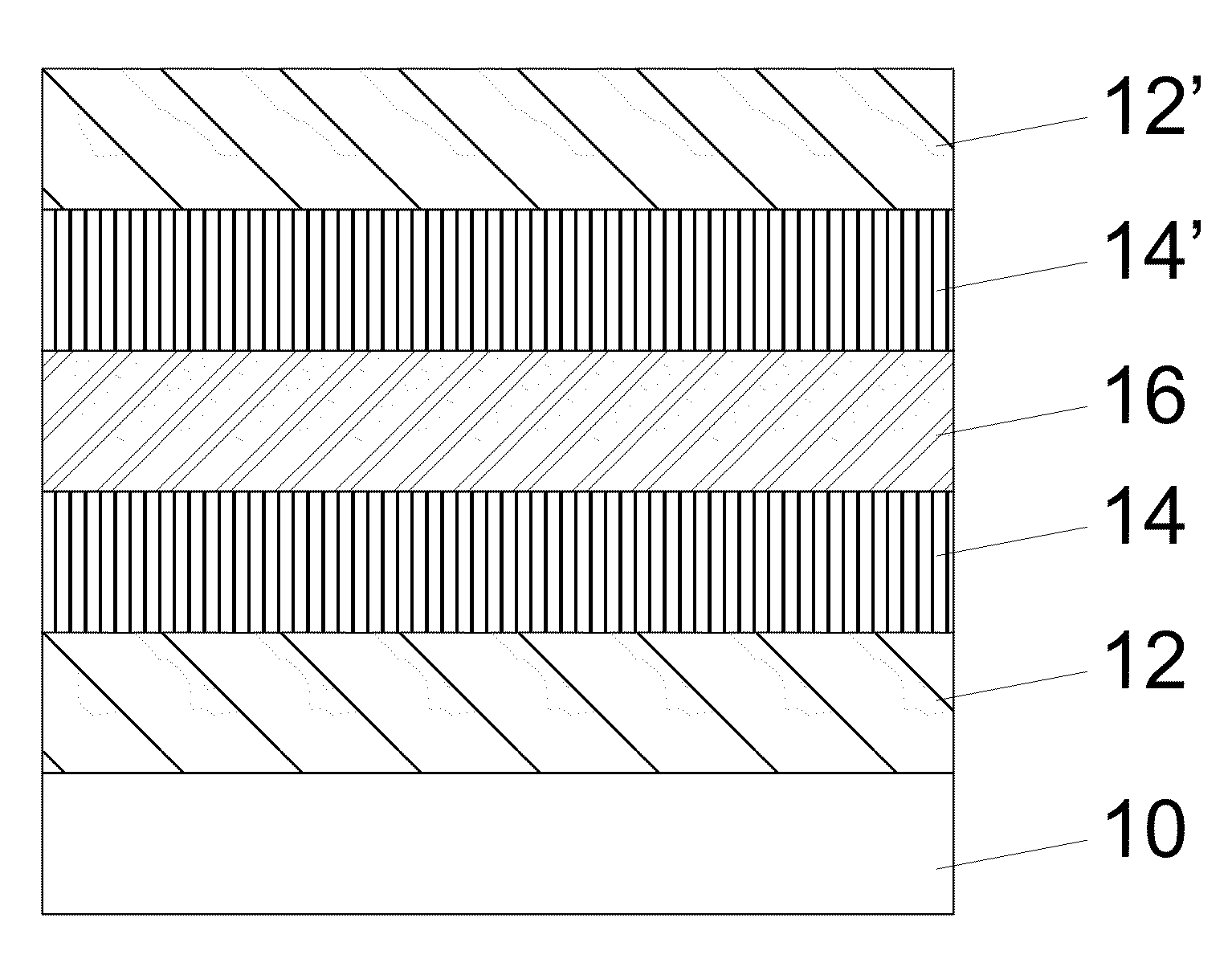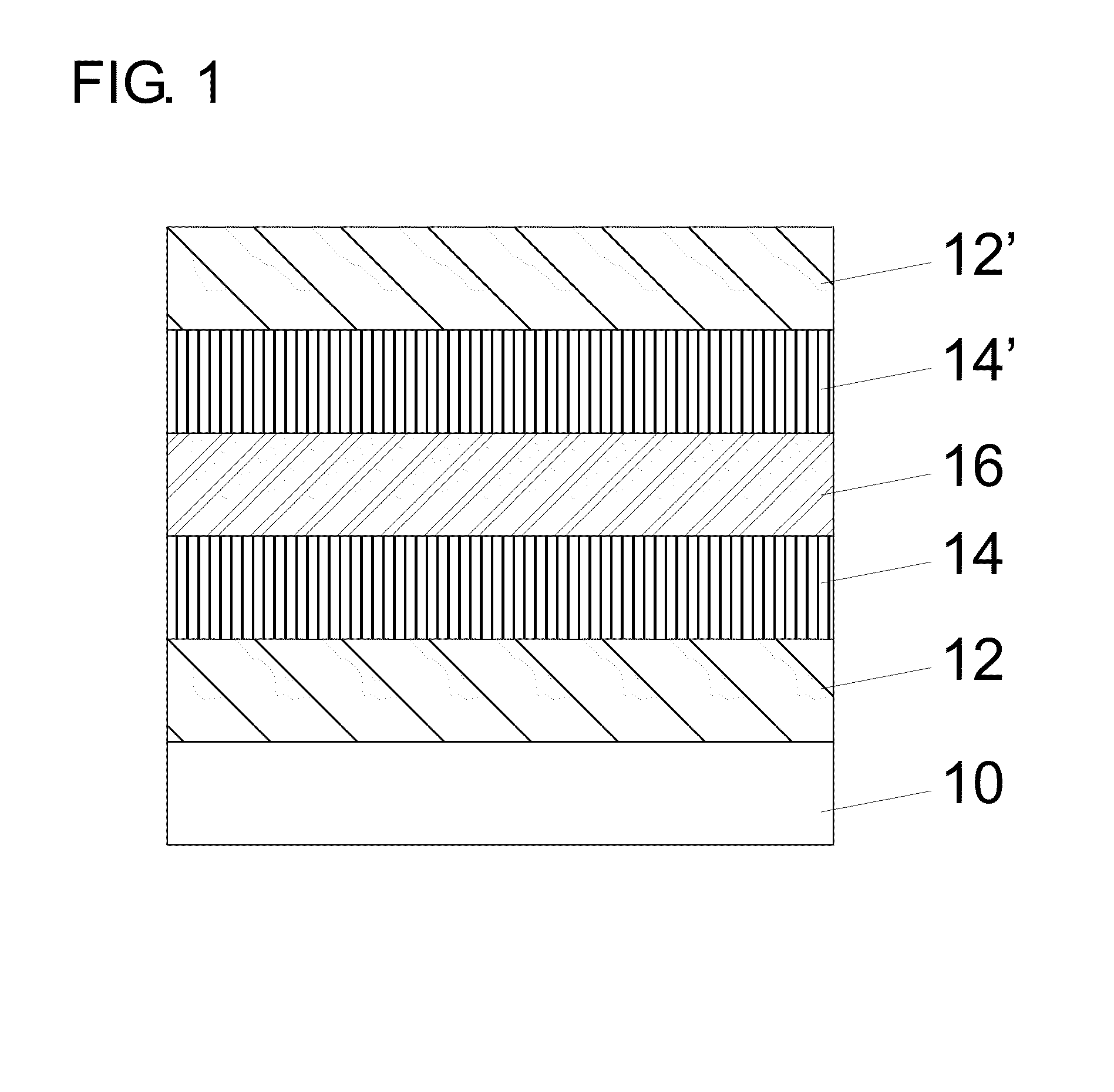Long wavelength infrared superlattice
a superlattice and long wavelength technology, applied in the field of long wavelength infrared superlattice, can solve the problem of narrow design parameters of realized devices
- Summary
- Abstract
- Description
- Claims
- Application Information
AI Technical Summary
Benefits of technology
Problems solved by technology
Method used
Image
Examples
example
[0044]The present invention need not be necessarily actualized by a particular growth method, nor is realization limited to a specific host substrate. However the following discussion will present an example on how to apply the novel type-II superlattice of the present invention to the creation of an infrared detector structure.
[0045]The type-II superlattice may be epitaxially grown using the molecular beam epitaxy (MBE) technique. In this method high purity elemental material, such as In, Ga, As, Sb, Si and Be are individually isolated within a high vacuum chamber. Each elemental source is individually heated, creating a vapor composed of that element. The vapors can then be individually directed toward the growth substrate for specific and deliberate time duration, where the vapors recombine on the substrate surface and form the desired semiconductor material.
[0046]A p-type GaSb host substrate may be loaded into the growth chamber of this MBE system. The GaSb substrate is heated i...
PUM
| Property | Measurement | Unit |
|---|---|---|
| thickness | aaaaa | aaaaa |
| thickness | aaaaa | aaaaa |
| total thickness | aaaaa | aaaaa |
Abstract
Description
Claims
Application Information
 Login to View More
Login to View More - R&D
- Intellectual Property
- Life Sciences
- Materials
- Tech Scout
- Unparalleled Data Quality
- Higher Quality Content
- 60% Fewer Hallucinations
Browse by: Latest US Patents, China's latest patents, Technical Efficacy Thesaurus, Application Domain, Technology Topic, Popular Technical Reports.
© 2025 PatSnap. All rights reserved.Legal|Privacy policy|Modern Slavery Act Transparency Statement|Sitemap|About US| Contact US: help@patsnap.com



